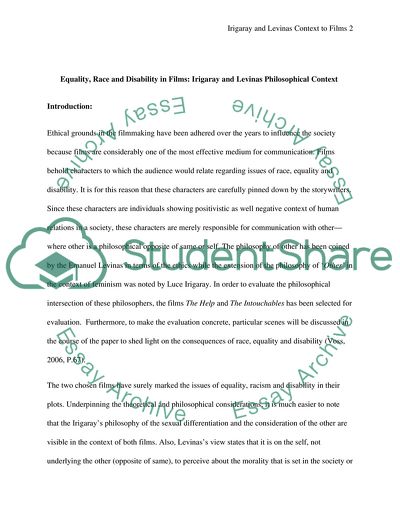Cite this document
(Equality, Race and Disability in Films Essay Example | Topics and Well Written Essays - 3000 words, n.d.)
Equality, Race and Disability in Films Essay Example | Topics and Well Written Essays - 3000 words. https://studentshare.org/visual-arts-film-studies/1792117-equality-disability-and-race-in-films-the-help-tate-taylor-2011-and-untouchable-olivier-nakache-eric-toledano-2011
Equality, Race and Disability in Films Essay Example | Topics and Well Written Essays - 3000 words. https://studentshare.org/visual-arts-film-studies/1792117-equality-disability-and-race-in-films-the-help-tate-taylor-2011-and-untouchable-olivier-nakache-eric-toledano-2011
(Equality, Race and Disability in Films Essay Example | Topics and Well Written Essays - 3000 Words)
Equality, Race and Disability in Films Essay Example | Topics and Well Written Essays - 3000 Words. https://studentshare.org/visual-arts-film-studies/1792117-equality-disability-and-race-in-films-the-help-tate-taylor-2011-and-untouchable-olivier-nakache-eric-toledano-2011.
Equality, Race and Disability in Films Essay Example | Topics and Well Written Essays - 3000 Words. https://studentshare.org/visual-arts-film-studies/1792117-equality-disability-and-race-in-films-the-help-tate-taylor-2011-and-untouchable-olivier-nakache-eric-toledano-2011.
“Equality, Race and Disability in Films Essay Example | Topics and Well Written Essays - 3000 Words”. https://studentshare.org/visual-arts-film-studies/1792117-equality-disability-and-race-in-films-the-help-tate-taylor-2011-and-untouchable-olivier-nakache-eric-toledano-2011.


